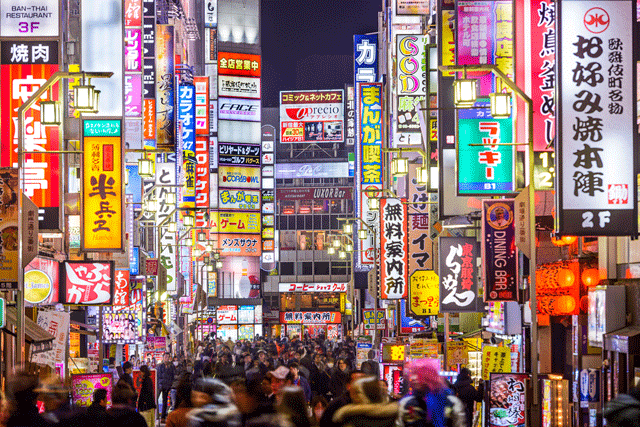Tourists on vacation are giving Shinzo Abe cause for celebration. That’s because the Japanese Prime Minister’s target of attracting 20 million such visitors annually by 2020 was already been all but met in 2015, giving him the all-too-rare incentive to aim for an even loftier total.
The Japan Times reported earlier this week that 19.73 million travelers arrived in The Land of the Rising Sun last year, according to a new Tourism Ministry tally.
Equally impressive is the rate in that visitor total increase, up 47.3 percent from 2014’s 13.41 million, and nearly quadruple the 5.21 million that arrived in 2003 when the nation’s “Visit Japan” campaign kicked off.
This of course of begs the question: What is drawing tourists to Japan in such droves? One word might easily sum up the answer: China. The neighbouring nation’s newly thriving middle class, along with an inversely weakening yen, has made Japan a prime destination for PRC tourists. Japan’s recently slackened visas and expanded duty free shopping have spurred that momentum on. All that would explain why the biggest total of visitors was Chinese, at nearly five million and more than double their 2014 total, while also being the biggest splurges, making up nearly 41% of the ¥3.5 trillion forked over by tourists in 2015.
Those staggering totals are highlighted by the comparatively smaller total of Taiwanese visitors, who came in second at 15%, followed by the 8.7% of South Koreans and 7.6% of travelers hailing from Hong Kong. The spending gulf was even vaster, with Taiwanese trailing China’s 41% slice of the total spending by a far slimmer 15%, while South Korea’s 8.7% and Hong Kong’s 7.6% put them in third and fourth place, respectively. But visitors from outside the Asia Pacific region also impressed with increases, especially Americans, who leapt up by nearly 16% in total visitors last year in comparison to 2014, surpassing 1 million visitors for the first time.
Still, China is unquestionably the biggest factor in Japan’s tourism surge. This has lead many Japanese to dub their visiting neighbor’s shopping sprees as bakugai or “explosive.” In fact, as previously reported by Tokyo Weekender, bakugai was named the buzzword of the year by Japanese Jiyukokuminsha publishing house’s U-Can Shingo Ryukogo Taisho (or U-Can New Words and Buzzwords Awards).
The South China Morning Post cited statistics on what those PRC tourists are splurging on. Anyone assuming that Japan’s once dominant electronics products would top that list was proven wrong — instead, the Japan National Tourist Agency reported that 63% of Chinese tourists bought cosmetics and perfume, 55% purchased food, spirits and cigarettes, while 52% bought over-the-counter medicines and toiletries – and a fair number of condoms. Only 37% devoted funds to electrical appliances to rice cookers and Japan’s “famous high-tech toilet seats.” This proves that, from the spending patterns to their overall total number, every facet of Japan’s Chinese tourist draw is circumventing expectations.
—Kyle Mullin
Image: Sean Pavone/Shutterstock.com
Updated On July 18, 2017








